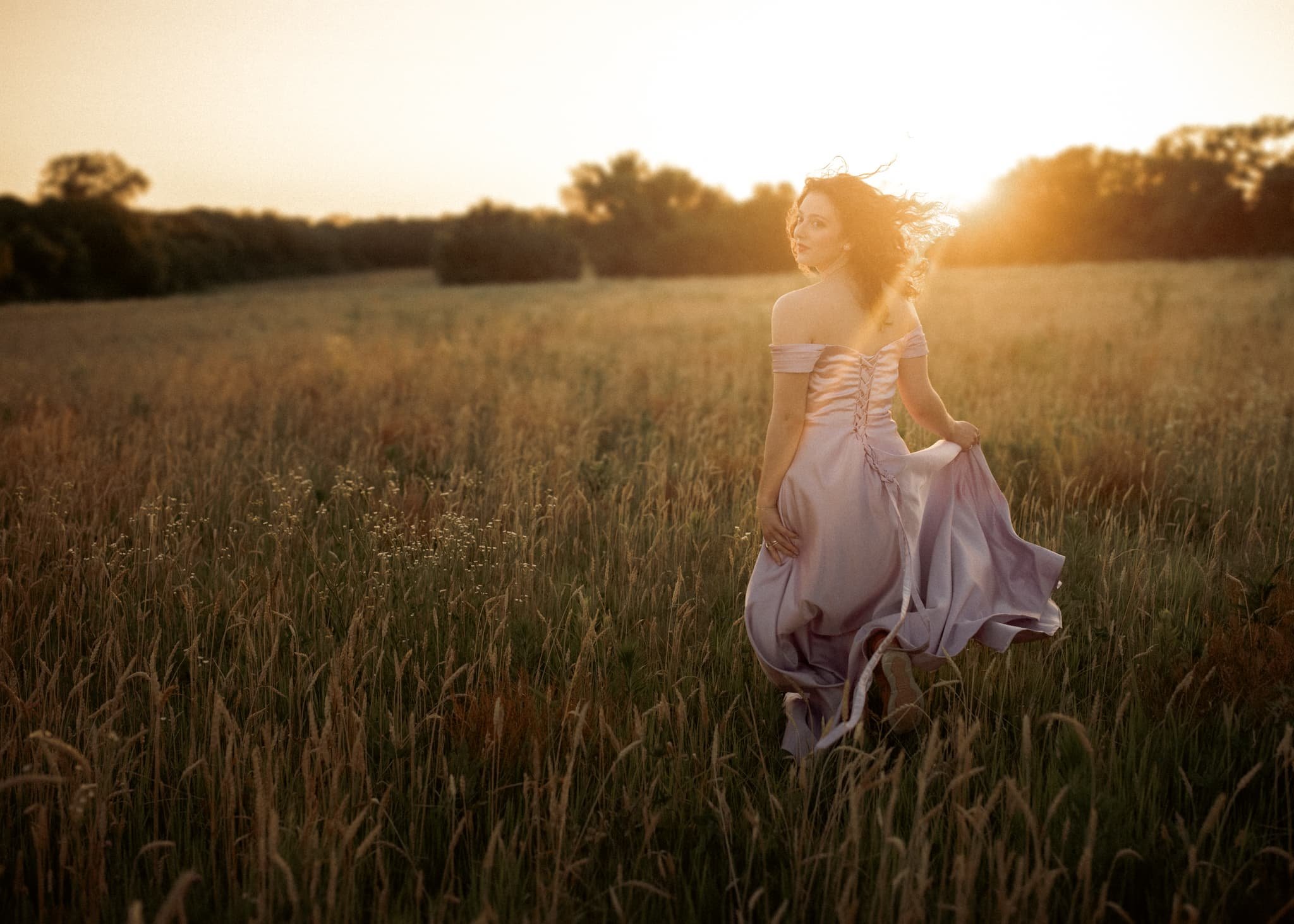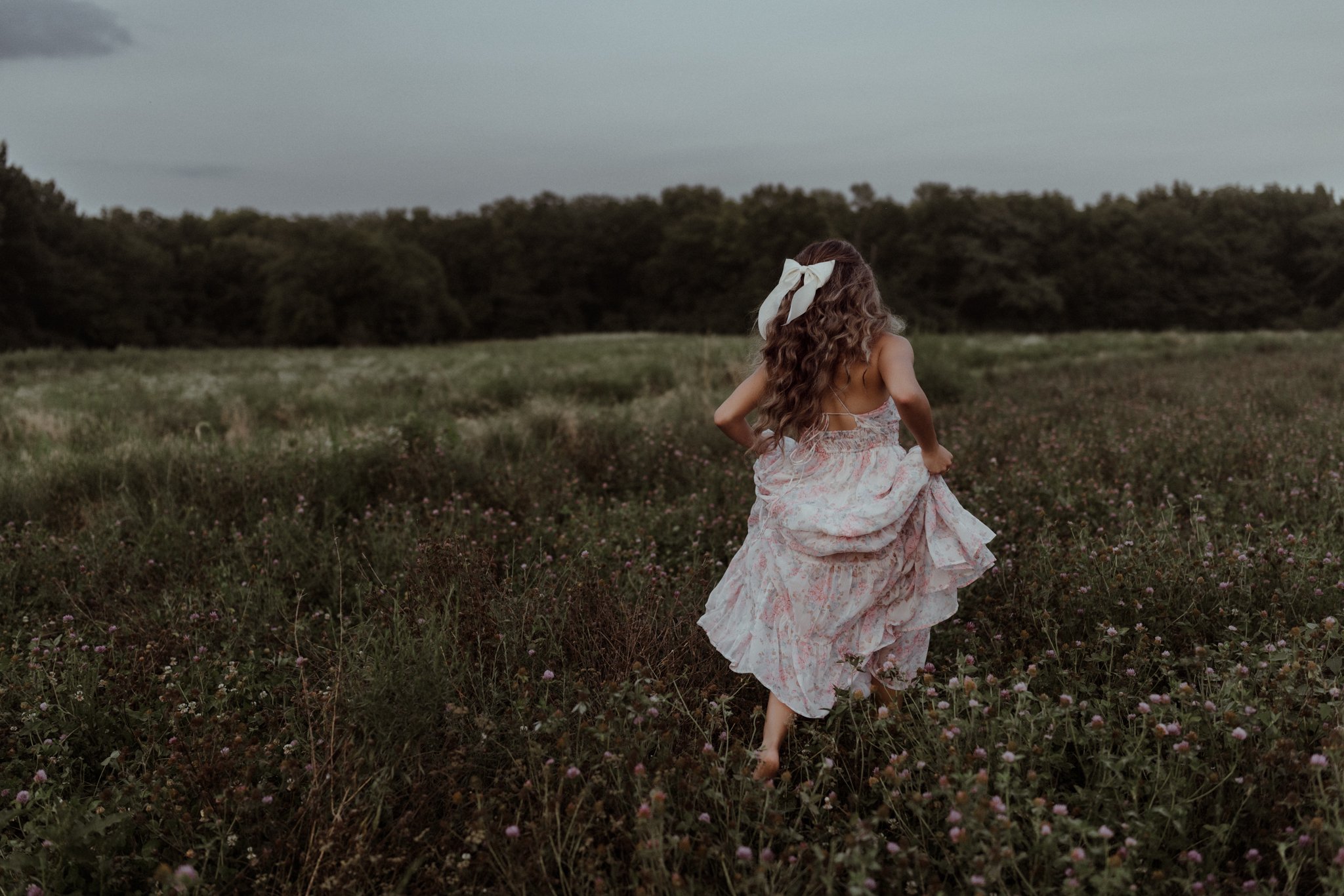The Language of Natural Light
How Different Types of Natural Light Shape the Mood of a Photo
As photographers, we spend a lot of time thinking about light. Where it’s coming from, how strong it is, what kind of shadows it’s casting, and—most importantly—how it makes a photo feel.
Light isn’t just a technical thing. It’s emotional. It sets the tone for the entire image. Whether you’re photographing a high school senior or a family of five chasing their dog through a field, the light tells part of the story.
In this post, I want to walk through four types of natural light I use often: midday light, direct light, golden hour light, and blue hour light. Each has its strengths and challenges, and each one brings a different mood to the final photo.
Midday Light: Honest, Harsh, and a Little Misunderstood
Midday light often gets dismissed by photographers, and I get it. The sun is high overhead, shadows fall straight down, and it’s easy for people’s faces to get lost in harsh contrast. But midday light can be useful when you know how to work with it.
It’s a bold kind of light—clear, bright, and unfiltered. It doesn’t try to be soft or subtle. Instead, it highlights strong shapes, deep shadows, and high contrast. That can create striking, high-impact images, especially in urban environments or expansive natural settings.
Sometimes it’s the only light available, especially for families with mid-day nap schedules or seniors between classes. And that’s okay. I don’t always try to fight it—I'll look for open shade, try to bounce light, or just embrace the starkness if it fits the vibe.
Direct Light: Strong, Directional, and Full of Texture
Direct light happens when the sun is lower in the sky—usually in the early morning or late afternoon—and hits your subject at an angle. It’s still intense, but it creates longer, more directional shadows.
I like using direct light when I want to emphasize texture, shape, and strength. It adds a lot of dimension to a photo and can feel bold and modern. This type of light often works well for portraits, where confidence is a key aspect of the story.
That said, direct light isn’t always flattering in the traditional sense. It emphasizes every detail, so it’s essential to be intentional with angles. But that’s part of what makes it compelling—it feels real.
Golden Hour Light: Soft, Warm, and Universally Flattering
Golden hour is the crowd favorite for a reason. It’s that sliver of time right after sunrise or right before sunset when the light turns warm and soft and everything seems to glow.
This soft light is incredibly forgiving—it smooths skin, wraps subjects in a gentle haze, and brings warmth into the frame without requiring much effort at all. Emotionally, it feels nostalgic, peaceful, even romantic. It’s ideal for family sessions, maternity photos, and senior portraits where you want connection and calm to take center stage.
The only downside? It moves fast. You don’t have a lot of time to mess around, so I usually plan my sessions carefully and make sure we’re ready to move and adapt as the light shifts.
Blue Hour Light: Quiet, Cool, and Subtly Emotional
Blue hour is the period immediately before sunrise or just after sunset. The sky is cooler—shades of blue, violet, and sometimes pink—which affects the photo's color temperature, and everything feels a little softer and moodier.
This type of soft natural light is ideal for emotional and reflective moments. It works well for couples or portrait clients who want something a little more artistic and subdued. It’s less about brightness and more about tone.
Because the light source is low in the sky, creating a darker environment, you may need to push your ISO or work with slower shutter speeds, but it’s worth it. Blue hour photography often has a cinematic quality. If there are any fans of the movie Pride and Prejudice (2005), do you remember the scene at the end of the movie when Darcy is walking across a field towards Elizabeth? THAT is blue hour. Or really blue hour fading into golden hour.
Why Light Shapes the Mood
When people look at a photo, they might not always know why it evokes a certain feeling, but light plays a significant role in this process. Each type of natural light creates a different emotional tone:
Midday light feels bold and honest.
Direct light feels confident and striking.
Golden hour light feels warm and heartfelt.
Blue hour light feels quiet and introspective.
When I plan a session, I try to think about what kind of light best supports the story we’re telling. Natural light? Or artificial light? Are we going for playfulness? Connection? Strength? Stillness? Understanding light helps guide the way.
There’s No “Perfect” Light—Just the Right Light for the Moment
Some days the sun cooperates, and some days it hides behind a wall of hazy clouds. Some sessions require warmth and softness, while others demand contrast and clarity. The more I shoot, the more I realize there’s beauty in all of it.
Light isn’t something to control—it’s something to respond to. It’s part of the collaboration when you shoot natural light photography. And when we pay attention to it, it helps us tell better stories.
If you're curious about how I use different types of natural light in my sessions—or want to schedule a shoot that works with the kind of light you love, reach out to me at liz@sunshineandshadowsphotography.com.
Let’s plan something beautiful, no matter what the sun’s doing.






